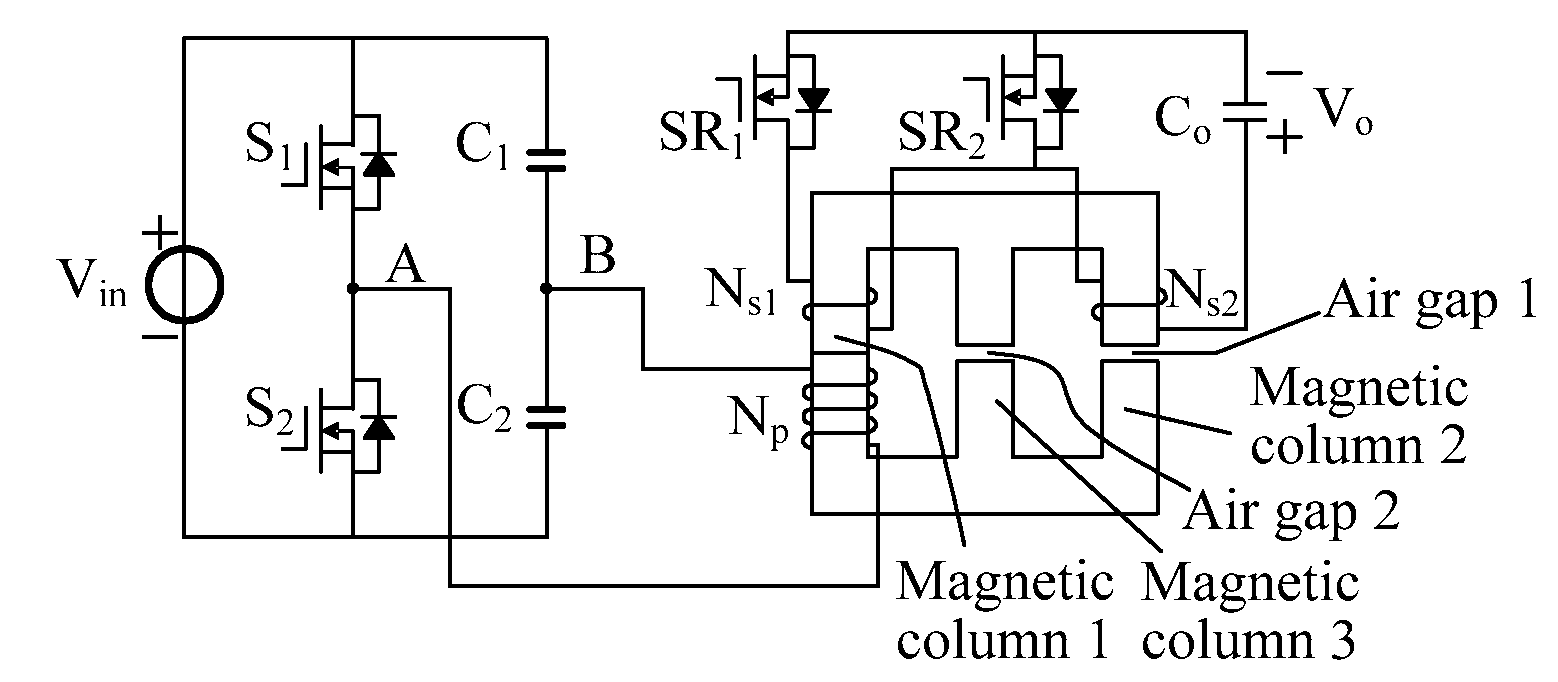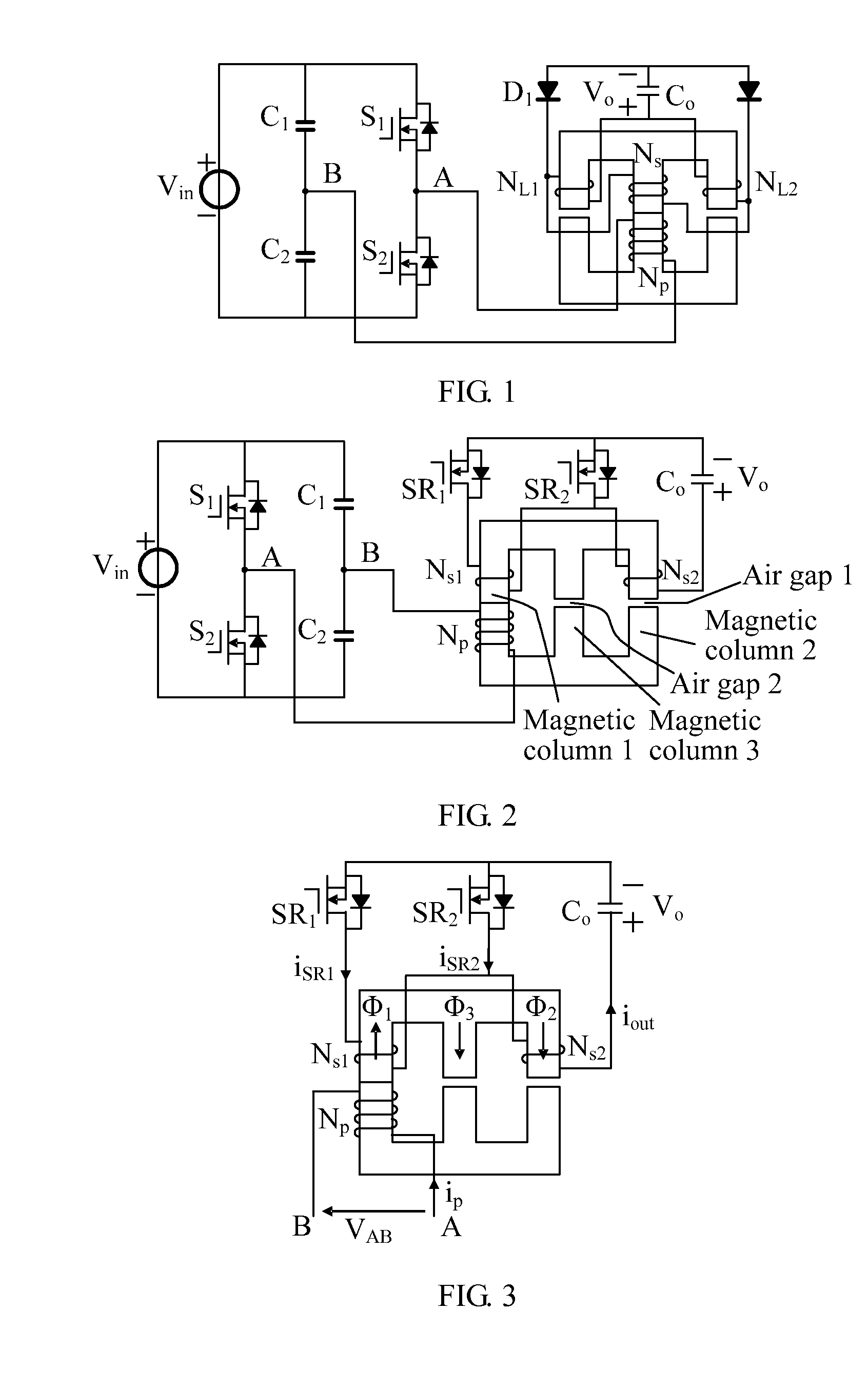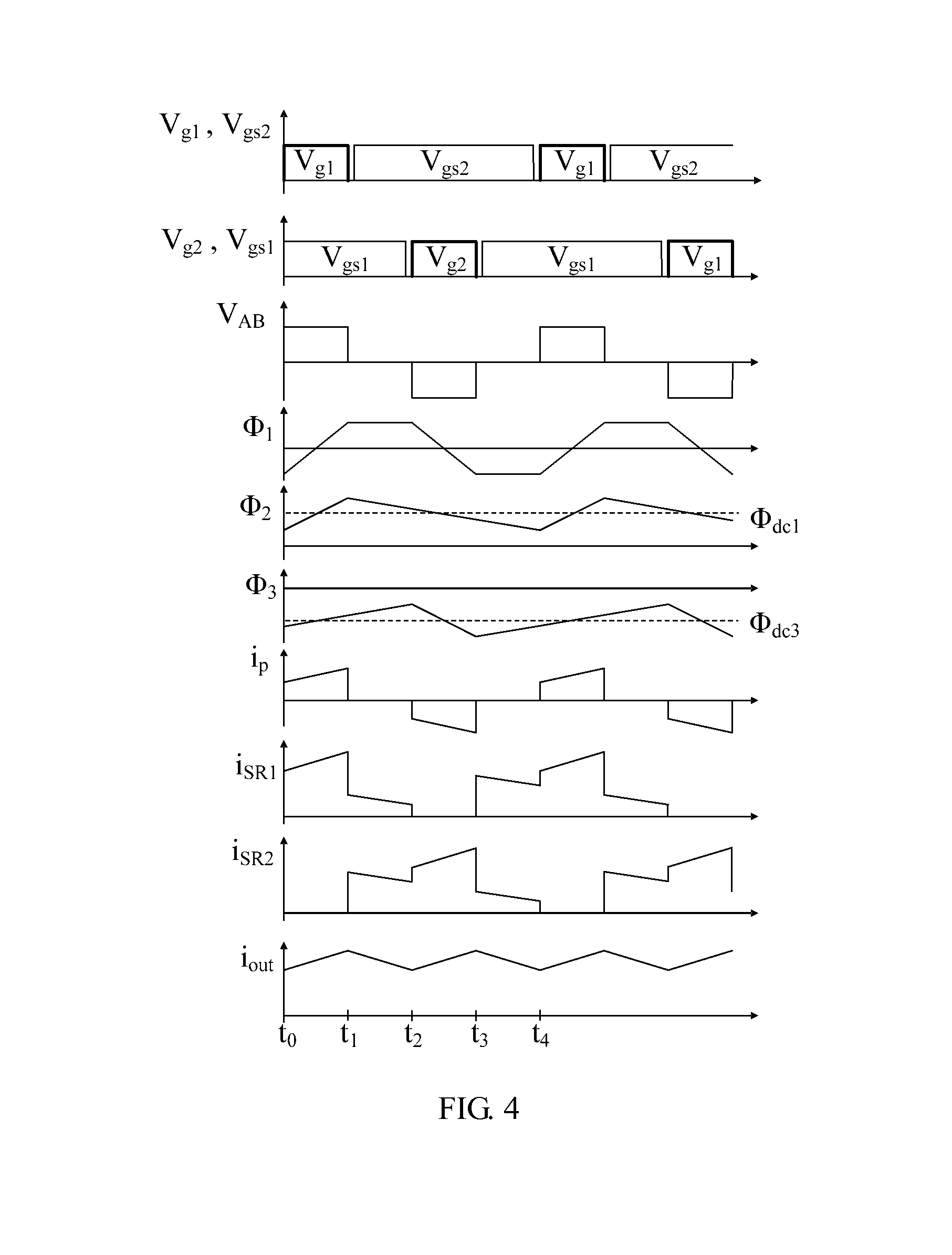Magnetic integration double-ended converter
a converter and double-ended technology, applied in the direction of electric variable regulation, process and machine control, instruments, etc., can solve the problems of large leakage inductance and significant loss of windings in the prior art, and achieve high-efficiency energy conversion and reduce the loss of windings and leakage inductan
- Summary
- Abstract
- Description
- Claims
- Application Information
AI Technical Summary
Benefits of technology
Problems solved by technology
Method used
Image
Examples
embodiment 1
[0036]FIG. 2 shows a magnetic integration half-bridge converter in Embodiment 1, where a half-bridge inverter circuit on a primary side includes voltage dividing capacitors C1 and C2 and power switch diodes S1 and S2. An integrated magnetic member of the magnetic integration half-bridge converter includes an EE-type magnetic core. The EE-type magnetic core includes three windings and two energy storage air gaps. A primary winding Np and a first secondary winding Ns1 are wound around a first magnetic column 1, a second secondary winding Ns2 is wound around a second magnetic column 2, an energy storage air gap 1 is disposed on the second magnetic column 2, and an energy storage air gap 2 is disposed on a third magnetic column 3. Two ends of the primary winding Np are respectively connected to a connection point A of bridge arms of the power switch diodes S1 and S2 of the half-bridge inverter circuit and a connection point B of the voltage dividing capacitors C1 and C2 of the half-brid...
embodiment 2
[0044]FIG. 5 shows a magnetic integration half-bridge converter of Embodiment 2. The difference between the magnetic integration half-bridge converter of Embodiment 2 and the magnetic integration half-bridge converter of Embodiment 1 is that, an EE-type magnetic core of Embodiment 2 includes three windings and one energy storage air gap. A primary winding Np and a first secondary winding Ns1 are wound around a first magnetic column 1, a second secondary winding Ns2 is wound around a second magnetic column 2, an energy storage air gap 1 is disposed on a third magnetic column 3, and the number of turns of the first secondary winding Ns1 is twice the number of turns of the second secondary winding Ns2.
[0045]Referring to FIG. 5, a working process of the circuit of Embodiment 2 may also be divided into four stages:
[0046]Stage 1 [t0-t1]: The power switch diode S1 on the primary side is turned on and S2 is turned off, and the synchronous rectifier SR1 on the secondary side is turned on and...
embodiment 3
[0052]FIG. 7 shows a magnetic integration half-bridge converter of Embodiment 3. On the basis of Embodiment 2, a third secondary winding Ns3 is added on a third magnetic column 3. Specifically, an EE-type magnetic core of Embodiment 3 includes four windings and one energy storage air gap. A primary winding Np and a first secondary winding Ns1 are wound around a first magnetic column 1, a second secondary winding Ns2 is wound around a second magnetic column 2, the third winding Ns3 is wound around the third magnetic column 3, an energy storage air gap 1 is defined in the third magnetic column 3, and the number of turns of the first secondary winding Ns1 is twice the number of turns of the second secondary winding Ns2.
[0053]In this case, the first secondary winding Ns1, the second secondary winding Ns2, the third secondary winding Ns3, an output filtering capacitor Co, and a first synchronous rectifier SR1 form a power circuit on the secondary side; the second secondary winding Ns2, t...
PUM
 Login to View More
Login to View More Abstract
Description
Claims
Application Information
 Login to View More
Login to View More - R&D
- Intellectual Property
- Life Sciences
- Materials
- Tech Scout
- Unparalleled Data Quality
- Higher Quality Content
- 60% Fewer Hallucinations
Browse by: Latest US Patents, China's latest patents, Technical Efficacy Thesaurus, Application Domain, Technology Topic, Popular Technical Reports.
© 2025 PatSnap. All rights reserved.Legal|Privacy policy|Modern Slavery Act Transparency Statement|Sitemap|About US| Contact US: help@patsnap.com



